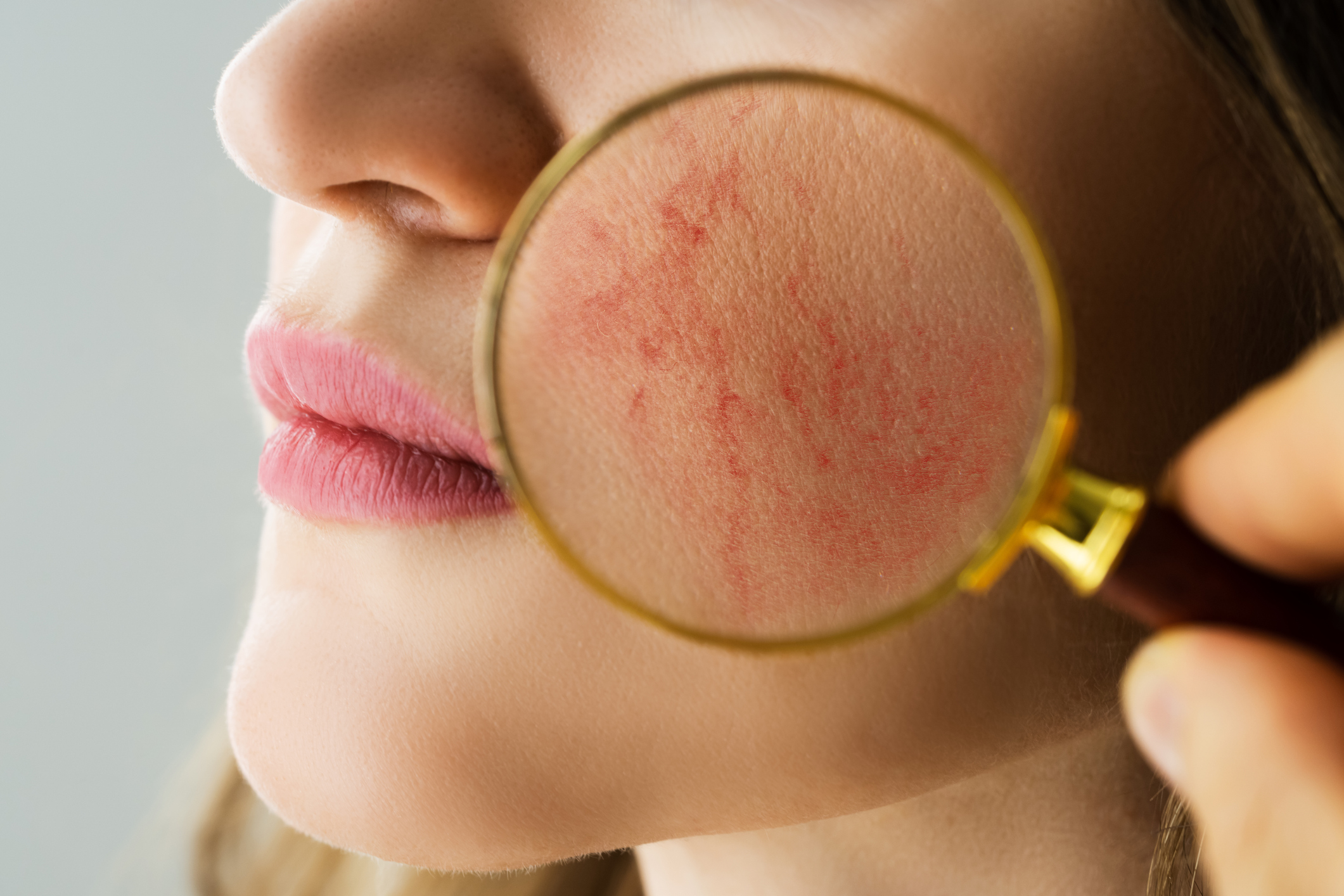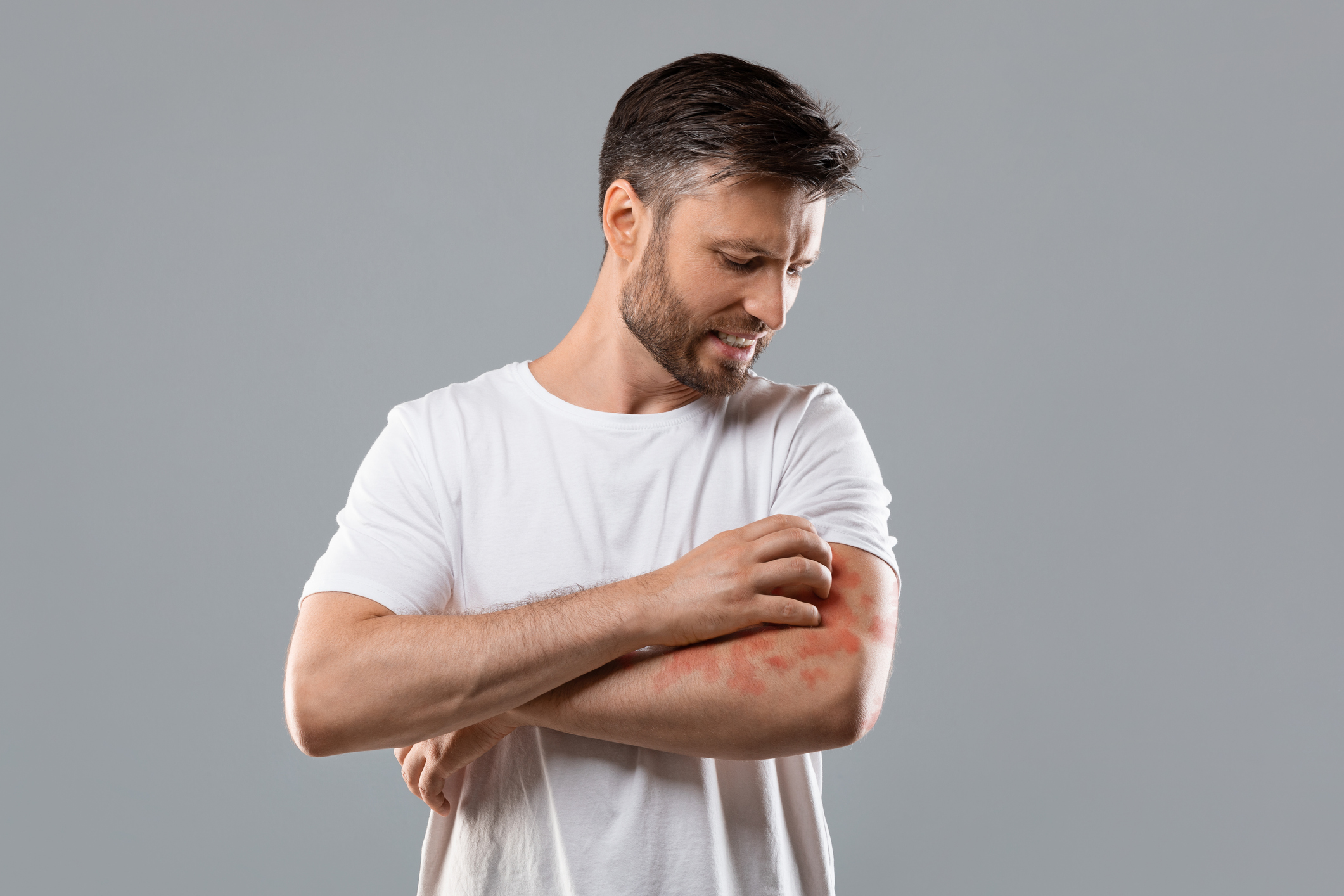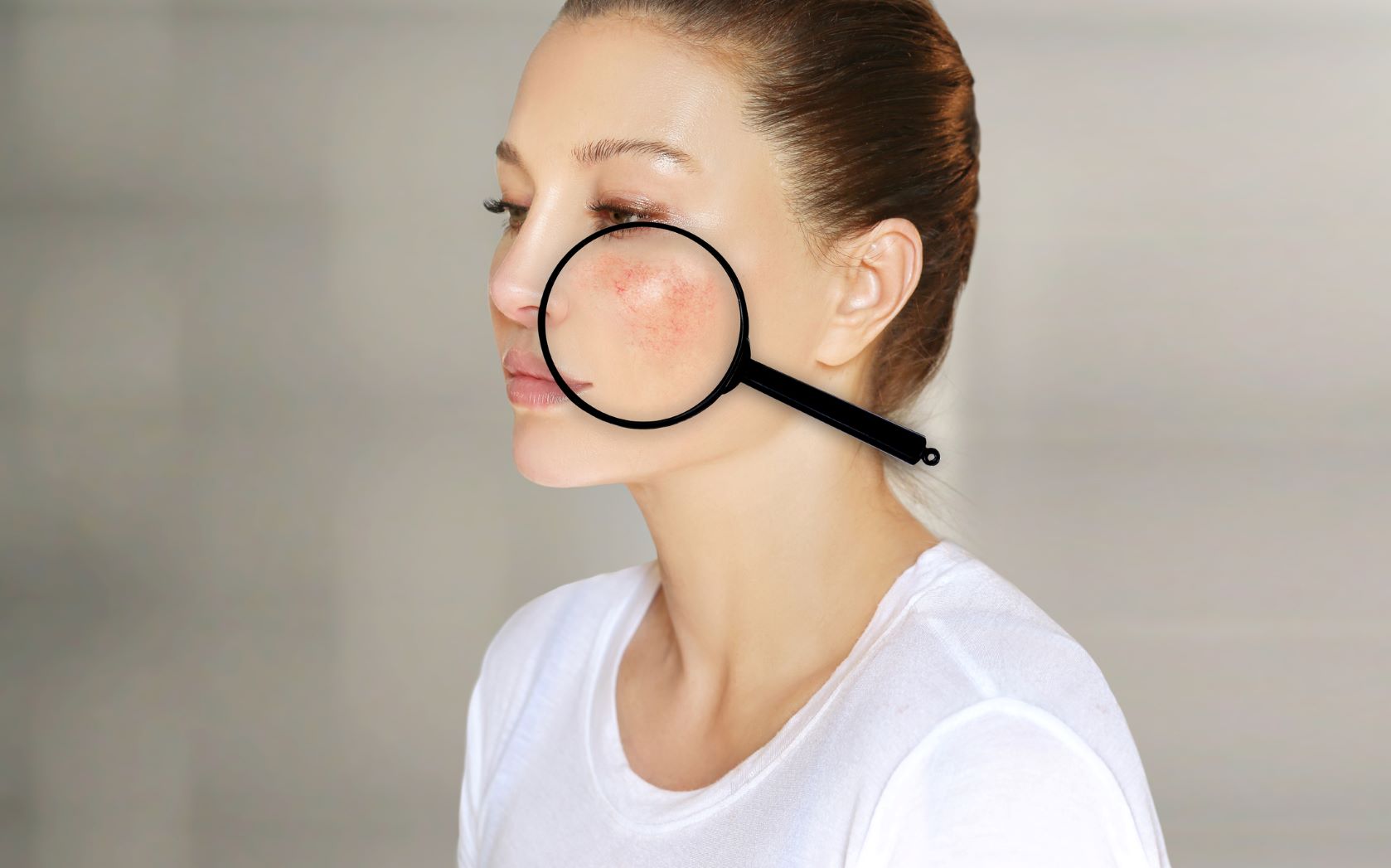
Eczema vs. Rosacea: Know the Difference
Eczema and rosacea are two common skin conditions that can significantly impact a person’s quality of life. Although they may appear similar at first glance, these conditions differ in causes, symptoms, and treatment approaches. Understanding the differences is crucial for effective management and ensuring healthier skin.
What is Eczema?
Eczema is a chronic skin condition that causes inflammation and irritation of the skin. It often develops in early childhood but can persist into adulthood.
Eczema Symptoms
Eczema symptoms include dry, red, itchy, and sometimes thickened skin, often accompanied by flaky or scaly patches. Those with darker skin tones may experience changes in skin pigmentation and are more likely to experience the formation of papules and thickened skin. In severe cases, the skin may crack, ooze, or bleed, leading to discomfort and an increased risk of infection.

Causes and Triggers
Eczema is believed to result from a combination of genetic and environmental factors. Common triggers include allergens (like dust mites and pollen), irritants (such as soaps and detergents), and even stress. Weather changes, particularly cold and dry conditions, can also exacerbate symptoms.
Affected Areas
Eczema can appear anywhere on the body, but it is most commonly found on the hands, feet, elbows, knees, and face. In children, the condition often affects the cheeks and scalp.
What is Rosacea?
Rosacea is a chronic inflammatory skin condition that often affects the face. It is more prevalent in adults and can lead to persistent redness and visible blood vessels.
Rosacea Symptoms
Rosacea symptoms include facial flushing, visible blood vessels, and small red or pus-filled bumps that can resemble acne. In some cases, the eyes may also become irritated, a condition known as ocular rosacea.

Triggers
Common triggers for rosacea include spicy foods, alcohol, hot beverages, and exposure to extreme temperatures. Emotional stress and sun exposure are also known to aggravate the condition.
Affected Areas
The central parts of the face—namely, the cheeks, nose, forehead, and chin—are the main areas affected by rosacea. In some cases, rosacea can cause issues with the eyes, including dryness, tingling, and even blurred vision.
Eczema vs Rosacea – Key Differences
Symptom Comparison
Eczema symptoms focus on dryness, itching, bumps, thickened skin, and flakiness, while rosacea is marked by constant redness, flushing, bumps that sometimes look like acne, and visible blood vessels. The persistent itching that we commonly associate with eczema is generally not found in the person with rosacea.
Causes and Risk Factors
Genetic mutations and insufficient production of certain skin barrier proteins can cause eczema, and extreme responses by the immune system to certain triggers are thought to cause both rosacea and eczema.
Age and Population Differences
Eczema often starts in young children, while rosacea usually occurs in adults, particularly those with very light skin. Rosacea can cause red areas on the skin of people with lighter skin tones, but on those with darker skin tones, it may simply change the pigmentation of the skin.
Location of Affected Areas
Different individuals can have eczema appear anywhere on the body, such as behind the knees, neck, the crooks of the elbows, eyelids, and around the mouth. By contrast, rosacea almost strictly affects the facial features.
How They’re Diagnosed
Diagnostic Methods
The clinical examination of the patient’s skin and their medical history are the basis for diagnosing both conditions. In some instances, a skin biopsy may be performed to eliminate other conditions from consideration.
Professional Consultation
Effective treatment depends on accurate diagnosis. When dealing with skin conditions, proper identification is critical, making consultation with a dermatologist key. Following this, a suitable treatment plan can be put into place.

Treatment Options
How is Eczema Treated?
Treatments for eczema generally centre on decreasing inflammation and alleviating symptoms. These include:
- Lotions, Ointments, Etc: The regular application of fragrance-free and allergen-free moisturisers to hydrate the skin and stave off dryness.
- Topical Corticosteroids: These can reduce inflammation and itching. A doctor may prescribe oral corticosteroids instead of topical creams.
- Antihistamines: Antihistamines can help you handle the itching and improve your sleep.
- Laser Treatment: Laser treatment has been proven to help reduce skin inflammation.
- Biologic Injections: These medications target parts of your immune system to prevent or lower eczema symptoms.
- Avoiding Triggers: The chance of flare-ups can be reduced by identifying and avoiding triggers.
How is Rosacea Treated?
Rosacea is treated by managing symptoms and preventing flare-ups. There are some common methods of treatment available:
- Prescription Creams: Medications that constrict superficial blood vessels can reduce redness, and topical antiseptics can shrink skin bumps.
- Laser Therapy: Can really make a difference for some individuals by reducing redness and shrinking enlarged blood vessels.
- Antibiotics: For more serious forms of rosacea, oral antibiotics may be needed.
- Demodex Mite Treatments: These treatments reduce the presence of Demodex mites (microorganisms naturally found on humans) on the skin, which are thought to trigger an immune response that causes rosacea.
- Avoiding Triggers: An essential part of managing rosacea is identifying and managing personal triggers.
Managing Triggers and Preventing Flare-Ups
Lifestyle Adjustments for Eczema
To stop eczema outbreaks, it’s absolutely necessary to use delicate, odourless skincare products—free of any and all allergens. Even the mildest triggers, like a change in the weather, can be enough to set off an eczema explosion.
Lifestyle Adjustments for Rosacea
The management of rosacea centres on pinpointing and steering clear of individual triggers. This may include safeguarding the skin from the sun, cutting way back on hot beverages and spicy foods, and avoiding the kind of weather that makes the average person sweat or shiver.
When to See a Dermatologist
Signs for Professional Help
When symptoms continue, intensify, or bring considerable discomfort, it is time to get professional advice. Dermatologists can give you plans that are right for you and your chronic condition and can help you better manage life with skin issues.
Importance of Early Intervention
Prompt identification and treatment can stop problems from growing worse and boost overall skin wellness. This is especially good for timely intervention, which is crucial for maintaining a person’s confidence and quality of life. If you’re showing signs of either of these conditions, it’s important to get the issue checked out before it gets worse.
Get Help With Eczema and Rosacea at The Devonshire Clinic
Eczema and rosacea are very different skin conditions that require different kinds of care, and understanding their differences is essential for effective treatment. The Devonshire Clinic, located in London’s world-renowned Harley Street medical district, specialises in a wide range of skin conditions, including eczema and rosacea. If you’re experiencing persistent skin issues and need clarity on the cause or appropriate treatment, consult one of our expert dermatologist for clear, straightforward guidance. Our specialists provide professional advice to achieve healthy, radiant skin. Contact The Devonshire Clinic today to schedule an appointment and receive the expert care you deserve.